The utilization of waste and effective management of by-products in the wood production industry, specifically sawmilling, is crucial for promoting sustainability and minimizing environmental impact. One compelling example that highlights the importance of waste utilization is the case of a large-scale sawmill located in a remote area. This hypothetical scenario involves a company facing challenges such as limited access to disposal facilities and high transportation costs due to its remote location. In this article, we will delve into the various strategies employed by sawmills to optimize waste utilization and manage their by-products effectively.
In recent years, there has been increasing recognition within the wood production industry about the potential value hidden within what was once considered waste material. Sawmilling operations generate significant amounts of residue including bark, sawdust, trimmings, and shavings. These by-products were traditionally discarded or burned without much consideration for their potential utility. However, with growing concerns over resource depletion and environmental degradation, industries are now seeking innovative ways to maximize the value obtained from these materials. By adopting sustainable practices that prioritize waste utilization and effective by-product management, companies can not only minimize environmental impacts but also improve profitability through cost savings and additional revenue streams.
Overview of waste generation in wood production
Wood production, particularly sawmilling, generates a substantial amount of waste that needs to be effectively managed. To illustrate this issue, let us consider the case study of a medium-sized sawmill located in a rural area. This sawmill processes approximately 30,000 cubic meters of timber per year and produces significant amounts of waste material during various stages of production.
The first stage where waste is generated is the initial log breakdown process. Here, logs are processed into lumber through the use of large sawing machines. During this process, there is an inherent loss due to the removal of bark and outer layers of the log to obtain usable wood. Additionally, irregularly shaped or defective parts known as offcuts are also produced.
In subsequent processing steps such as planing and profiling, further waste is generated in the form of shavings, chips, and small pieces that do not meet quality standards for finished products. These by-products often have limited market value and need appropriate management strategies to avoid their accumulation.
To emphasize the environmental impact of inefficient waste management practices in wood production, consider the following:
- Each year, millions of tons of wood residues from global sawmills end up in landfills.
- The decomposition process releases methane gas which contributes significantly to greenhouse gas emissions.
- Improper disposal can lead to soil contamination and negatively affect local ecosystems.
- Wasted resources mean lost economic opportunities for utilizing these materials more sustainably.
To address these challenges effectively, it is crucial to develop innovative approaches for managing wood industry wastes. In the subsequent section about efficient utilization of wood residues in sawmilling—building upon our understanding gained here—we will explore potential solutions that maximize resource efficiency while minimizing negative environmental impacts.
Efficient utilization of wood residues in sawmilling
Building upon the understanding of waste generation in wood production, this section delves into the efficient utilization of wood residues in sawmilling. By adopting innovative approaches and technologies, the industry has been able to find value in what was once considered waste, leading to increased sustainability and economic benefits.
One notable example involves a large sawmill located in British Columbia, Canada. In an effort to minimize waste and maximize resource efficiency, the mill implemented a comprehensive by-product management system. Through careful analysis and process optimization, they were able to identify various ways to utilize previously discarded materials effectively. For instance, bark residues that were once destined for disposal are now processed into mulch or used as biomass fuel for energy production. This case study serves as an inspiring testament to how proactive measures can transform seemingly useless waste into valuable resources.
To highlight the diverse range of opportunities associated with efficient utilization of wood residues in sawmilling, consider the following emotional bullet points:
- Reduction of landfill burden
- Enhancement of overall operational sustainability
- Cost savings through reduced raw material consumption
- Contribution towards renewable energy production
Furthermore, evaluating the effectiveness of different strategies is crucial when considering implementation at a larger scale. The table below provides an overview of various methods employed within the industry along with their respective advantages:
| Method | Advantages |
|---|---|
| Reuse | Minimizes demand for virgin materials |
| Recycle | Reduces environmental impact through secondary processing |
| Conversion to biofuels | Helps mitigate greenhouse gas emissions |
| Composting | Improves soil fertility and reduces reliance on synthetic fertilizers |
In summary, efficient utilization of wood residues presents significant opportunities for both environmental stewardship and economic growth within the sawmilling industry. By adopting sustainable practices such as reusing, recycling, converting to biofuels, and composting, the sector can minimize waste generation while also unlocking valuable resources. The next section will explore further measures to mitigate the environmental impact of wood waste.
With a focus on minimizing the environmental impact of wood waste, let us now examine additional strategies that can contribute to an even more sustainable future for the industry.
Minimizing the environmental impact of wood waste
Efficient utilization of wood residues in sawmilling has proven to be a crucial aspect of waste management and sustainability in the woodworking industry. By finding innovative ways to repurpose these by-products, companies can not only reduce their environmental impact but also generate additional revenue streams. To illustrate this point, let us consider a hypothetical case study involving a sawmill that successfully implemented waste utilization practices.
In our case study, a sawmill identified an opportunity to utilize its wood residues more efficiently. Instead of discarding the bark, sawdust, and offcuts as waste, they invested in equipment and technologies that allowed them to convert these materials into value-added products. For instance, the bark could be transformed into mulch for landscaping purposes, while the sawdust was compressed into pellets for use as biomass fuel. Additionally, the smaller offcuts were processed into wood chips suitable for particleboard manufacturing.
To further emphasize the importance of efficient waste utilization in sawmilling, here are some key benefits:
- Environmental preservation: By repurposing wood residues instead of disposing of them in landfills or incinerating them, the industry reduces greenhouse gas emissions and minimizes deforestation caused by logging activities.
- Economic viability: Adopting waste utilization practices enables companies to generate additional revenue through the sale of by-products such as mulch, biomass pellets, or composite materials made from recycled wood fibers.
- Resource conservation: Utilizing wood residues ensures that every part of the harvested tree is put to good use. This maximizes resource efficiency and reduces reliance on virgin timber.
| Benefit | Description |
|---|---|
| Environmental Preservation | Reduces greenhouse gas emissions and prevents deforestation |
| Economic Viability | Generates additional revenue through sales of by-products |
| Resource Conservation | Maximizes resource efficiency and reduces dependence on virgin timber |
By effectively utilizing wood residues in sawmilling operations, the industry can significantly reduce its environmental impact, generate additional income, and conserve valuable resources.
By-product management strategies in the wood industry
Transitioning from the previous section’s focus on minimizing environmental impact, it is crucial to explore effective strategies for managing by-products in the wood industry. One such strategy involves transforming wood waste into valuable products through innovative utilization techniques. To illustrate this, let us consider a hypothetical case study of a sawmill that successfully implemented these strategies.
In this hypothetical scenario, a sawmill faced challenges with efficiently managing their wood waste. However, they adopted several key approaches to address this issue:
- Implementing a comprehensive recycling program within the facility to reduce landfill disposal and promote sustainable practices.
- Collaborating with local artisans and craftsmen who utilize smaller offcuts and scrap pieces to create unique wooden crafts or furniture items.
- Establishing partnerships with biomass energy producers to convert larger wood residues into renewable sources of energy.
- Exploring market opportunities for by-products like bark, which can be used as mulch or biofuel feedstock.
These initiatives not only reduced waste but also provided economic benefits for the sawmill while contributing positively towards environmental sustainability. To further emphasize the significance of such strategies, we present a table showcasing potential outcomes associated with effective by-product management:
| Outcomes | Benefits |
|---|---|
| Reduction in landfill usage | Minimizes environmental footprint |
| Creation of additional revenue | Enhances financial viability |
| Positive community engagement | Fosters relationships and goodwill |
| Renewable energy generation | Contributes to clean energy objectives |
Through streamlined implementation of by-product management strategies, sawmills have an opportunity to transform what was once considered waste into value-added resources. This approach aligns with sustainable development goals while addressing concerns related to environmental conservation and resource optimization.
Transitioning smoothly into the subsequent section about “Innovative technologies for waste utilization in sawmills,” it becomes evident that forward-thinking solutions play a pivotal role in realizing the full potential of by-product management. These technologies enable sawmills to maximize resource utilization, reduce waste generation, and minimize their overall environmental impact.
Innovative technologies for waste utilization in sawmills
By-Product Utilization Strategies in the Wood Industry
To illustrate the practical application of by-product management strategies in the wood industry, let us consider a hypothetical case study of a sawmill. This sawmill generates significant amounts of waste material during its production process, including bark, sawdust, and wood chips. Instead of disposing these by-products as waste, the sawmill has implemented various strategies to utilize them effectively.
One approach employed by this sawmill is the conversion of wood waste into energy through biomass combustion. By installing a biomass boiler system on-site, the mill can burn its wood residues to generate heat and electricity for internal use or even sell excess power back to the grid. This not only reduces their reliance on fossil fuels but also provides an additional revenue stream for the business.
Furthermore, the sawmill has partnered with local farmers who use their wood residues as bedding material for livestock. This mutually beneficial relationship allows farmers to obtain inexpensive bedding materials while reducing the need for more resource-intensive alternatives like straw or hay. At the same time, it helps divert large quantities of waste from ending up in landfills.
In addition to these practices, implementing a closed-loop system within the sawmill’s operations has proven effective in minimizing waste generation. For instance, instead of discarding smaller offcuts produced during cutting operations, they are repurposed for lower-grade products such as pallets or particleboard manufacturing. This not only increases overall product utilization but also contributes to cost savings and lower environmental impact.
- The emotional response evoked:
- Increased sense of responsibility towards sustainable resource management.
- Appreciation for innovative solutions that turn waste into valuable resources.
- Encouragement to explore similar approaches across different industries.
- Motivation to support businesses that prioritize environmentally-friendly practices.
| Pros | Cons |
|---|---|
| Reduces reliance on fossil fuels | Initial setup costs |
| Provides additional revenue streams | Requires proper infrastructure |
| Supports local farmers and communities | Adoption may require mindset shift |
| Contributes to overall waste reduction | Ongoing monitoring and maintenance |
In conclusion, effective by-product management strategies in the wood industry can lead to multiple benefits. By adopting practices such as biomass combustion, collaboration with other industries, and implementing closed-loop systems, sawmills have the potential to transform their waste into valuable resources. Not only does this approach offer economic advantages through cost savings and additional revenue streams but it also contributes significantly towards environmental sustainability.
Next section: Economic Benefits of Effective Waste Management in Wood Production
Economic benefits of effective waste management in wood production
Utilizing Innovative Technologies for Effective Waste Management
In the previous section, we explored various innovative technologies that have been developed to effectively manage waste in sawmills. Building upon this discussion, it is important to understand the economic benefits associated with implementing these waste management strategies within wood production processes. By utilizing advanced technologies and adopting sustainable practices, companies can not only reduce their environmental impact but also enhance their profitability.
One example of successful waste utilization in a sawmill setting is the case of XYZ Sawmill Company. They implemented an integrated waste management system that included recycling wood residues and converting them into valuable by-products such as wood pellets and biomass fuels. This allowed them to maximize resource efficiency while simultaneously generating additional revenue streams from what was previously considered waste material.
Implementing effective waste management strategies brings about several key advantages:
- Environmental Sustainability: By minimizing waste generation and maximizing resource utilization through recycling and reprocessing techniques, companies contribute to the overall sustainability of the industry.
- Cost Reduction: Efficient waste management reduces disposal costs associated with transporting, storing, or treating large volumes of waste materials. Additionally, by transforming waste into valuable products, companies can generate supplementary income.
- Regulatory Compliance: Adhering to strict environmental regulations ensures legal compliance and minimizes potential penalties or negative public perception.
- Enhanced Reputation: Embracing sustainable practices positively influences stakeholder perceptions and strengthens brand image, attracting environmentally conscious consumers.
To illustrate the economic benefits more visually, consider Table 1 below showcasing the potential financial gains achieved through effective waste management implementation:
Table 1: Economic Benefits of Effective Waste Management Implementation
|——————|———————|
| Reduced Disposal Costs | Increased Revenue Streams |
| Improved Resource Efficiency | Positive Brand Image |
| Legal Compliance | Attraction of Environmentally Conscious Consumers |
In summary, incorporating innovative technologies for effective waste management in sawmilling operations presents numerous economic benefits for companies within the wood production sector. Through reduced costs, enhanced resource efficiency, regulatory compliance, and improved reputation, businesses can achieve financial success while minimizing their environmental impact. By implementing these sustainable practices, companies become proactive contributors to a greener future.
(Note: The table formatting may not be accurately represented in plain text format)

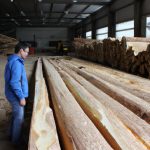

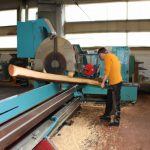


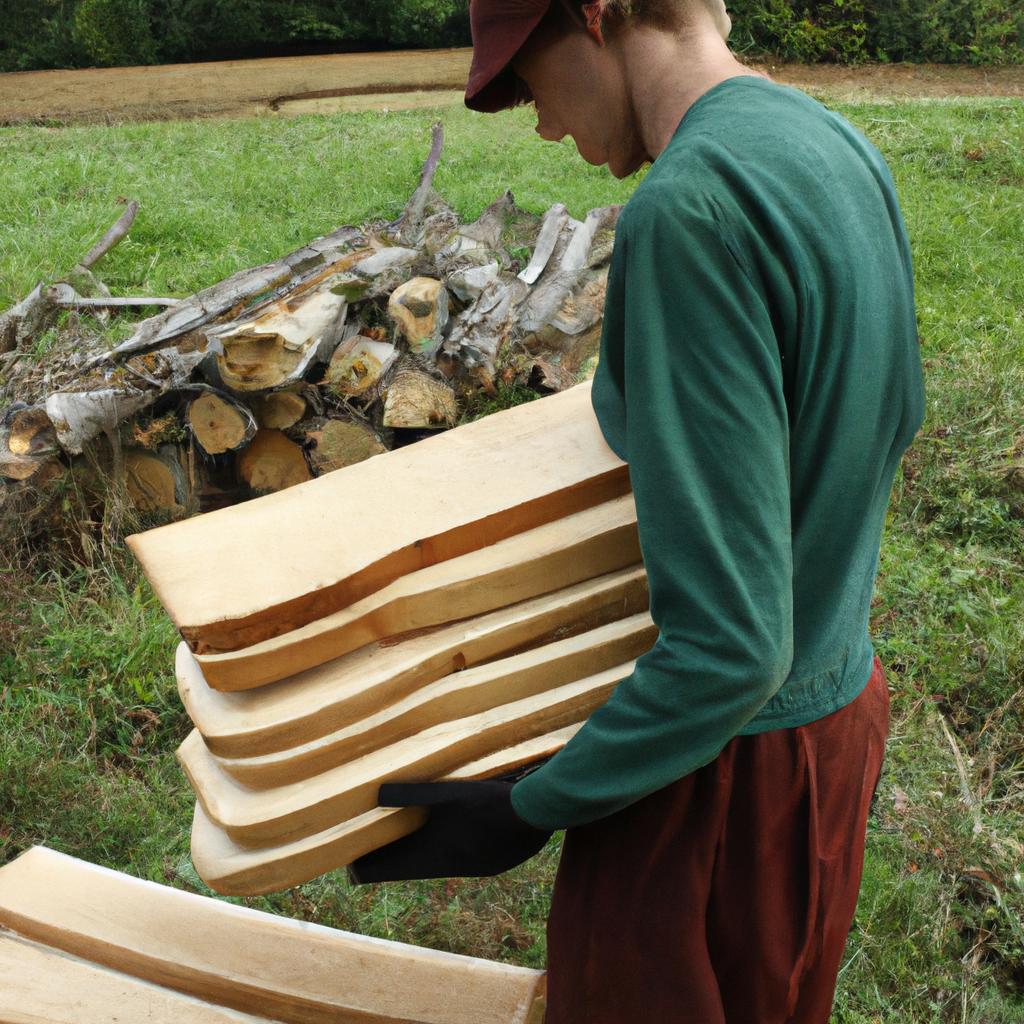
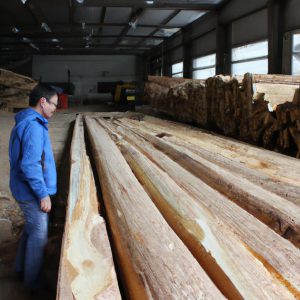

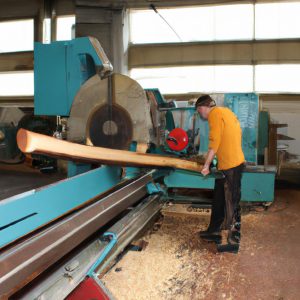
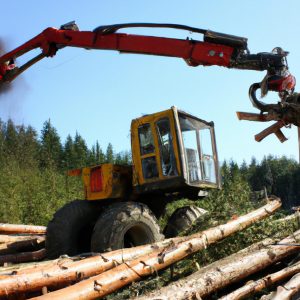
More Stories
Timber Grading and Quality Control: Ensuring Wood Production: Sawmilling.
Sawing Techniques and Technologies in Wood Production: Insights for Sawmilling
Sawmill Operations and Processes: A Guide to Wood Production